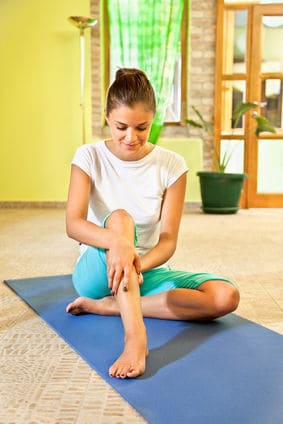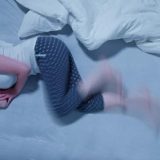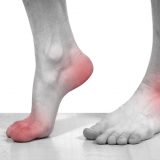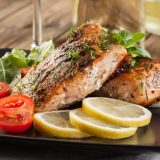

Strokes
We discussed the six basic massage strokes in “Do It Yourself Massage: Upper Body“ – effleurage, petrissage, friction, compression, tapotement and vibration. As we move to the lower body, we gain a bit more reach and access to the muscle tissue.
- For example, most people have enough reach to apply petrissage, or a kneading action, to their own quadriceps and calves, and sometimes to the hamstrings.
- As we work on the lower body we always want to apply effleurage in the direction of the heart, so we want to do gliding strokes up the legs, toward the groin where blood and fluid will be picked up and returned to the heart.
- Compression is often used by runners and cyclists to assist in recovery of leg muscles and can be easily applied to one’s own legs using a ball, a foam roller and even your hands. Apply compression in a pumping action, thinking about moving fluid up toward the groin as you work.
- Alternating compression with tapotement, or a drumming/thumping action with a loose fist or the side of your hand, will help by interfering with the pain cycle of the muscles allowing them to relax more fully.
As with any type of massage, self massage should never hurt beyond a level 7 on a pain scale of 1 through 10.
Massage for Lower Body
Gluteals
It can be difficult to gain much pressure into the gluteals, and this is an area that usually requires considerable pressure.
- The best approach to reaching this area effectively is to lie on your back, with your left leg bent at the knee.
- Use the left leg to lift your hips enough to place a tennis ball under the left gluteals and lower yourself onto the tennis ball. Use the bent leg’s leverage to control the pressure, moving the ball inch by inch around the gluteals to access all areas. Do not place the tennis ball directly under boney structures such as the sacrum, and allow time for the muscle to relax with each application of pressure.
- Repeat on the right side.
Quadriceps
Quadriceps and hamstrings can be worked out by rolling on a foam roller, however a roller is not necessary.
- Quadriceps can be worked by applying effleurage moving toward the groin.
- Follow this with petrissage, or kneading, of the muscle. Be sure to work the full length of the muscle from knee to groin. One way to get leverage on the quadriceps is to interlace your fingers over your thigh, then press the heels of your hands into the sides of the quadriceps and squeeze them together, using your laced fingers for leverage.
- If there are any particularly tight areas, apply circular friction to those areas.
- Finish with effleurage toward the groin again.
Hamstrings
Hamstrings can be difficult as it can be hard to reach them, and it is often useful to place a foot up on a low stool or step.
- Reaching around your leg, use a hooking action to apply petrissage to the hamstrings until you feel the muscle loosening up.
- Apply friction to trouble spots with fingers if possible, or by sitting with legs out straight with a tennis ball under them.
- Use tapotement if desired, thumping the hamstrings with loose fists.
- Finish with effleurage moving up, toward the heart.
Calves
The muscle on the back of the calves that most of us know is the gastrocnemius muscle, which becomes the Achilles tendon. Most do not realize that there is actually another muscle, the soleus, under the gastrocnemius. It is important to access that muscle to get relief in the lower leg.
- First, apply effleurage in an upward direction to warm up the area.
- Reach around to the back of the calf using the hooking action we used earlier to apply petrissage to the gastrocnemius. This can be done with both hands alternating, creating a back and forth motion. If you are flexible enough to apply a kneading action throughout the muscle, do so. One way to achieve petrissage on the calf is to reach behind the leg and interlace your fingers, “grabbing” the muscles of the calf with the heels of your hands and applying pressure while pulling away from the bone.
- Place your fingertips on either side of the Achilles tendon, apply circular friction as you imagine pulling the gastrocnemius away from the bone and pressing in under it as you access the soleus.
- Apply petrissage again, using the hooking action if needed.
- Finish with effleurage in an upward direction.
While working on the legs, apply circular friction around the knees and ankles to address the attachments there.
While nothing beats the leverage and skill of a professional massage, self massage allows us to address our daily aches and pains during those in between times when we cannot afford, or do not have time to go to a professional. By lowering our pain, we lower our stress levels, bringing about an overall improvement in our sense of well-being – and that is ultimately what massage is all about.




